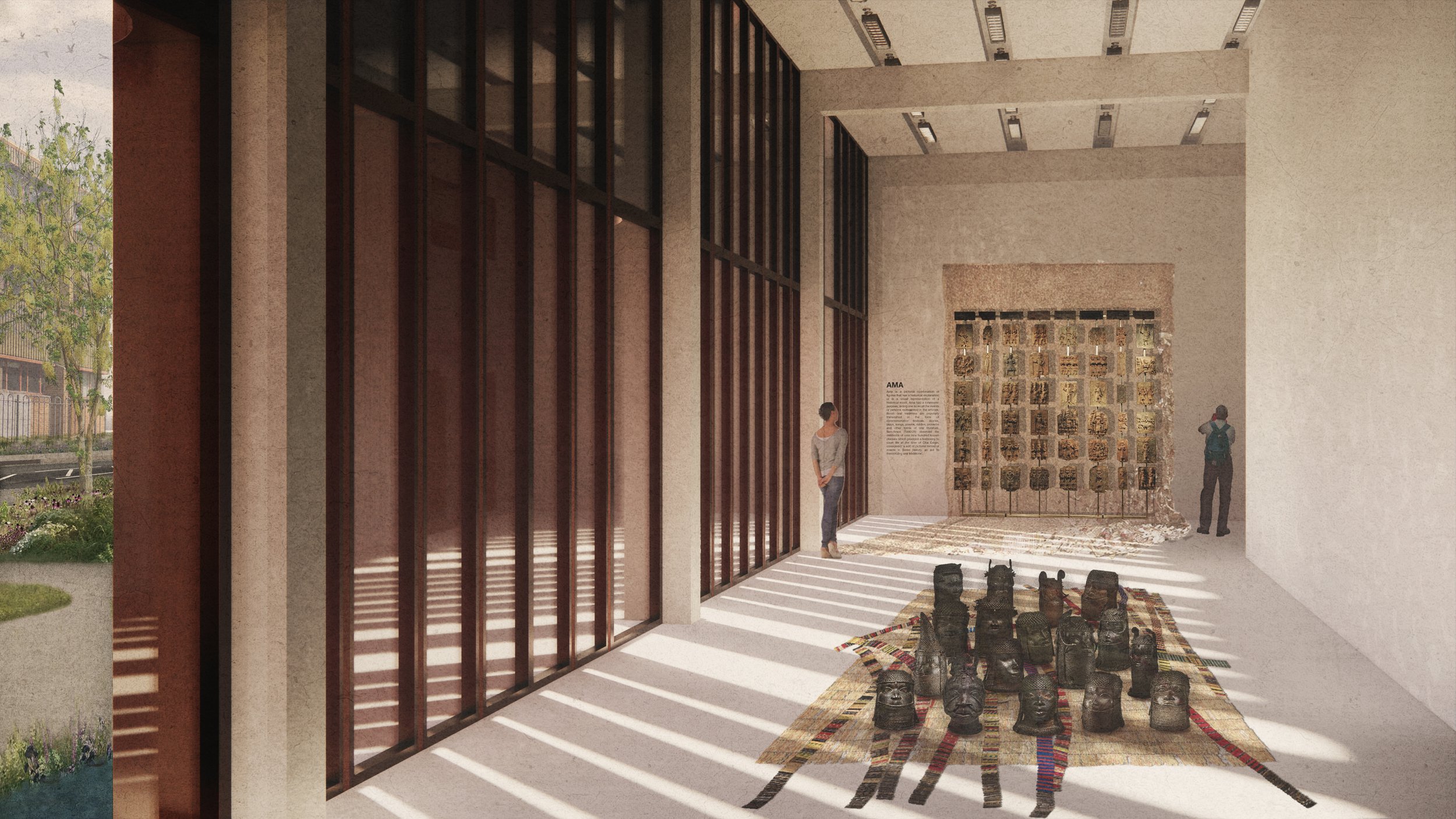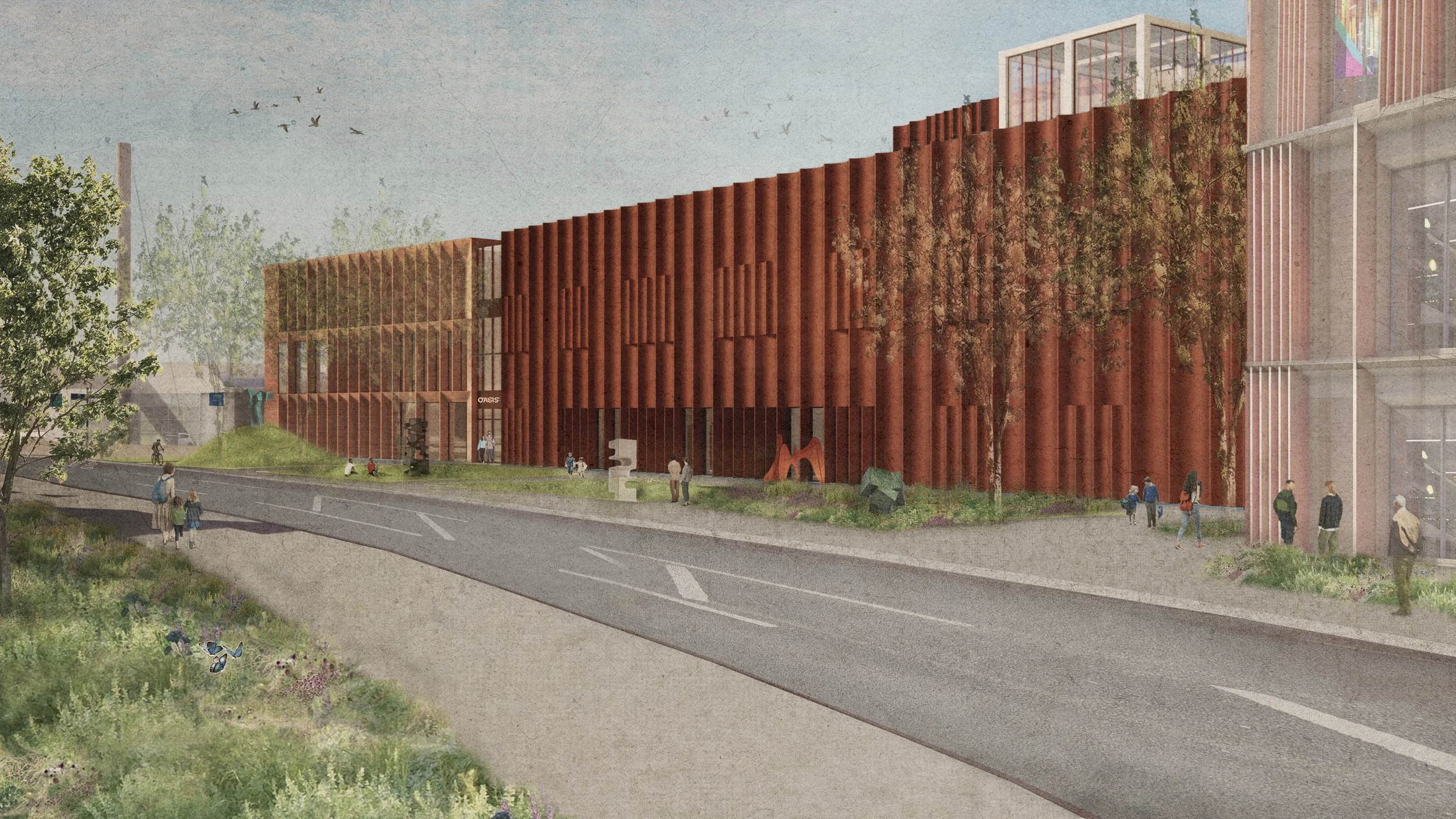The Oasis.
Architectural + Spatial Design — Personal Project
In response to the ongoing calls to repatriate the stolen Benin Bronzes and preserve Nigeria’s cultural heritage, the main goal of The Oasis is to facilitate the process of returning the Benin Bronzes to their place of origin, Benin City. The Oasis serves as a temporary home and repository for these pieces and makes Nigerian cultural and historical content more accessible and usable through its public access library.
Using its digital Lab, the proposed facility explores the potential of using technology to create digital exhibitions and 3D exhibits and promote the Nigerian heritage economy. Additionally, technology is used within the digital lab to carry out digital mapping and more accurate analyses of the Benin Bronzes to determine when and where these pieces were made in Benin and where they should be returned to. In turn, this offers new evidence to better understand Nigerian culture and civilisations.
Findings from the use of technology is then shared with partners of the proposed facility, particularly the University of Oxford as its African Studies department will benefit from gaining such knowledge.
The Oasis, through its redefinition of the word “exhibit”, re-imagines exhibition spaces. The stories of the objects on display are narrated through an African lens, prioritising the voices and perspectives of the communities from which these objects were taken. By doing so, it provides a unique and immersive experience for visitors, allowing them to fully engage with the history and culture of Nigeria in a way that has never been done before. Additionally, this educates and inspires visitors to appreciate and celebrate the rich heritage of Nigeria.
External Perspective — view from Oxpens Road, Oxford, UK

Internal Perspective — semi-permanent exhibition
Benin Bronzes and the Auction World
Numerous major auction houses have facilitated the distribution and privatisation of the Benin Bronzes and other looted artefacts. Some bronzes, ivory pieces, and brass castings entered the auction market after the 1897 Benin Punitive Expedition; however, few records of these transactions remain. The 20th century was marked by improved documentation and a surge in interest in “tribal art.” In the 1950s, auction prices for Benin Bronzes began at around £5,500. (Approximately USD 209,000 today). These numbers increased steadily throughout the 20th century. In 2007, Sotheby’s sold a sculpture of a Benin Head for $4.7 million. In a subsequent private sale, the winning bidder paid $13.8 million for another bronze work from Benin. The sale of these artworks has sparked controversy and raised questions about the ethics of selling cultural artefacts. Many (Africans) argue that these objects should be returned to their countries of origin and not sold for profit, while others (the West) argue that the countries where these artworks were stolen from lack the facilities to preserve them.
The Pitt Rivers Exhibition Hall
I took a day trip from Bath to Oxford to see, for the first time, the Bronzes held at the Pitt Rivers Museum. At the outset of my journey, I couldn’t contain my excitement at the prospect of reuniting with the bronzes that were looted from us in the 1897 Benin Punitive Expedition.
As I entered the exhibition hall where these bronzes were on display, that excitement quickly turned into feelings of discomfort, hurt, and anger. The following contributed to this:
How this institution displayed its collection of objects, particularly the Benin Bronzes
The labels used to describe the objects
The number of objects the institution had acquired
The thought of the amount of violence that would have been used to acquire these objects

